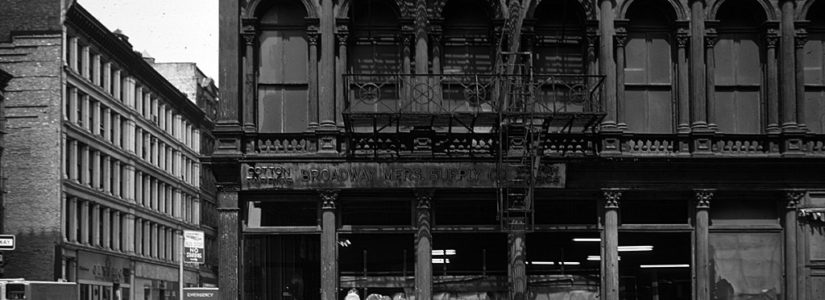
SoHo Native Raises Funds to Preserve Her Neighborhood’s Rich History
May 7, 2015
Article from the Spring 2015 Newsletter
Following up on the success of her blog, The SoHo Memory Project, Yukie Ohta, archivist, writer, and SoHo native, is setting out to raise funds to create a mobile historical society in partnership with The Uni Project, a nonprofit dedicated to creating pop-up learning experiences across New York City. The endeavor will present SoHo’s significant and fascinating history to the public, and there are plans to establish it as permanent institution.
The SoHo Memory Project is a blog and archive preserving and sharing the history of SoHo as a New York City neighborhood. Its focus is on SoHo as a community, a neighborhood comprised of a wide variety of people, families, businesses, community groups, and, only incidentally, all manner of creative activity. A significant aspect of the archive comprises material related to the preservation of the neighborhood in the 1970s onward.
Throughout the month of May, Ohta will be raising funds to design and create a roving pop-up exhibition, displayed within a cart on wheels, in collaboration with the Uni Project. “The result will be a portable historical society that can navigate the bustling urban environment of today’s SoHo, showing a glimpse of its past,” she explains. “Knowing the story of our neighborhood and its significance in the larger history of New York City will enrich the experiences of SoHo residents and visitors alike and will influence how they interact with the people, streets, and ideas of SoHo.”
The exhibition will chronicle the evolution of the area from rural farmland to high-end retail hub, charting its cycles of development and thus placing current day SoHo in the context of New York City’s history. It will focus on the decades between 1960-1980, when SoHo evolved from a manufacturing and warehousing district to an artists’ community whose mythical image looms large in the public imagination. The displays will include objects, ephemera, photographs, sound, and video, as well as artwork from SoHo artists that will complement the various narratives on display. Ohta intends to use unconventional media in her exhibition design, including 3D printed miniatures, comic books, LP record jackets, family photo albums, a smelling station, and even Viewmaster viewers.
At the forefront of a new wave in exhibition design, the cart for this roving exhibition will be adapted from designs for portable reading rooms created for the Uni Project by Höweler + Yoon Architecture and operated by the Uni Project across New York City today. Lightweight and versatile, and able to go indoors as well as outdoors, the cart can show up in shops, cafes, and other publicly accessible spaces where people already gather in the neighborhood. Locations and times will be announced via social media, but most visitors will happen upon it by chance. According to Ms. Ohta, “The immediacy of the exhibition will allow for a visceral experience that will ideally linger with viewers as they go on with their excursions through SoHo and inform the way they interact with the neighborhood.” Uni Project Executive Director Leslie Davol says, “We’re excited to use our pop-up approach to help Yukie tell the story of SoHo in an engaging way, and we hope this will provide a model for telling the stories of other neighborhoods.”
Although there are archives throughout the world that collect the personal papers of significant artists and individuals who were SoHo pioneers, SoHo itself has no historical society dedicated to preserving its history as a neighborhood, nor is there any library or museum that tells its story. Ohta hopes that this exhibition is just the first step in finding a permanent home for The SoHo Memory Project.
For further information please contact Yukie Ohta at 917-608-7460 or yukie.ohta@gmail.com.